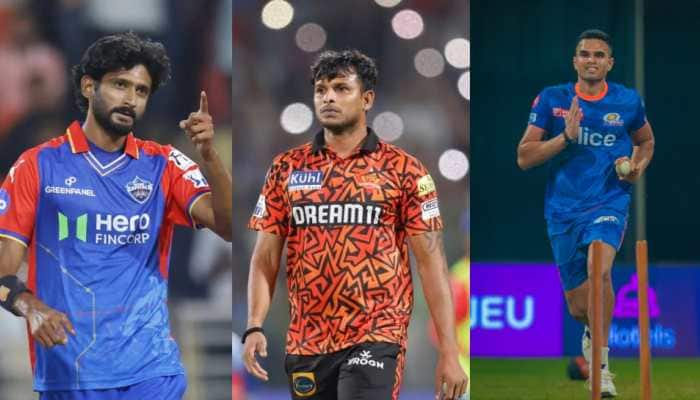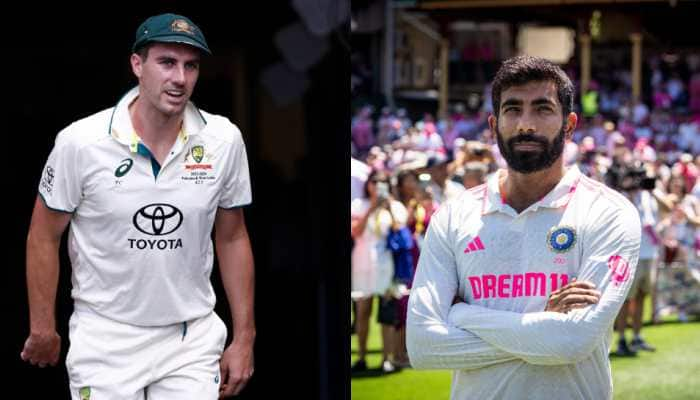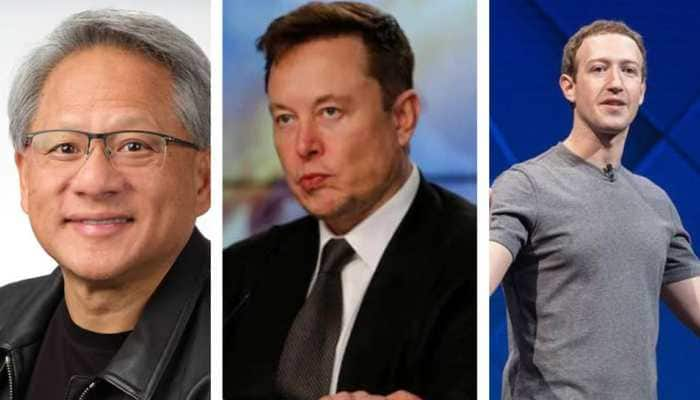Captaincy: More of a backstage management
Life has certainly come full circle for Sourav Ganguly. Is he the best captain ever to lead the Indian cricket team?
Trending Photos
)
Biswajit Jha
Life has certainly come full circle for Sourav Chandidas Ganguly. After a tumultuous journey with Kolkata Knight Riders, Sourav is finally doing well; if not as a cricketer then as a captain. When Ganguly led his warriors of Pune against MS Dhoni’s Chennai Super Kings on 14th April, the chief attraction was the battle between two finest captains of India. No doubt Ganguly outsmarted Dhoni on and off the field.
His spectacular phoenix like rise has once again sparked the perennial debate: Is he the best captain ever to lead the Indian cricket team?
Before we go into that debate, we need to examine the importance of a captain in cricket. Some say that captaincy is about 90 percent luck and 10 percent skill. You have to be extremely lucky to be a successful cricket captain.
What if Misbah-ul-Haq hit that last ball off medium pacer Joginder Sharma in the final of the T20 World Cup in 2007 properly over fine-leg? What if Sachin did not come up with an exceptional bowling performance in the famous Kolkata Test in 2001 at the fag end of the match that was the beginning of Ganguly’s spectacular journey as captain of Team India?
These are the little things which determine your career early. If you aren’t destiny’s favourite child, you won’t become a successful captain. But there need to be some exceptional qualities to be able to control the crucial 10 percent that determines the destiny of a captain.
Unlike other sports, captain in cricket is very important. It’s like a manager or a CEO who has to guide his team to generate highest productivity with the limited resources he has in his disposal.
If your team consists of individuals who have good skill sets and are already self-motivated, anybody within the group can lead team and still earn good results. The role of leader or captain may not be important for this team. The Australian team of the late nineties and most part of the first decade of this century might have done well without Steve Waugh or Ricky Ponting as their leaders. Or, wily Shane Warne might have inspired better results than Ricky Ponting. Damien Martyn could have produced same results if we believe the old adage that a captain is as good as his team.
But, in reality, sports teams, or for that matter any other organizations seldom have these perfect scenarios like the Australian team, where only few were needed to be motivated to achieve higher goals. Most of the players of the great West Indies team of the late 70s and 80s were no doubt a talented bunch but they needed someone like Clive Lloyd to instill self-belief into the Marshals, Garners, Roberts, Greenidge, Haynes after they were humiliated in Australia in 1975. They needed someone to guide them and motivate them. Without Llyod, they could have been good, but not greats! Not invincibles!
John Davison Rockefeller, an American oil industrialist, investor, and philanthropist, said “Good leadership consists of showing average people how to do the work of superior people.” England needed Mike Brearley when their chips were down in the late seventies and early eighties. Allan Border may not have a great record as captain as Steve Waugh or Ponting, but he instilled a resolute confidence in his players and laid foundations for the all conquering team of recent times.
We all follow on-field strategies, how one changes his bowlers, field placing and all, and pass our judgments on these criteria. But these are only half truths. The whole story of a successful captain is something more than what meets the eyes.
It’s not only the technical acumen on the field that brought success for Shane Warne as the captain of Rajasthan Royals in the inaugural edition of the IPL. It’s rather the way he inspired the little known Jadejas, Pathans, Asnodkars, Kamran Khans off the field that actually worked for him.
Like Lloyd, Ganguly has this unique talent of identifying players who can deliver for him. Ganguly took over the mantle of Indian cricket in the backdrop of match-fixing incidents in early 2000s. The Indian cricket was at its lowest point. The victorious march of Steve Waugh-led Australia team reached India to win the ‘final frontier’. Ganguly not only thwarted their winning spree, but also took Indian cricket to a new height.
Harbhajan Singh, who was the wrecker-in-chief in that series, was handpicked by the Bengal Tiger. The Punjab spinner was almost on the verge of going into oblivion before Ganguly gave him the final lifeline of his career. Laxman, who was struggling to cement his place before that tour, played that epoch-making 281 at Eden Gardens. The innings changed the face and fate of Indian cricket!
Ganguly might have promoted Laxman to bat at No. 3 in place of struggling Dravid; it’s his superb man-management skills that made him one of the greatest, if not the greatest captain of India. And this is the area we all forget to discuss when we analyse captaincy.
Not only Bhajji, Ganguly helped revive the careers of Yuvraj Singh, Virender Sehwag and Anil Kumble. He gave them a sense of security which worked wonders for them.
Brearley in his book The Art of Captaincy wrote that it is essential to recognize the nature of the team members within the structure of the team. And to obtain the best results for the team, everyone should be inspired to trust in their own abilities, and that is exactly what ‘dada’ did.
The role of captain is like a Prime Minister. He is the first among equals and not their feudal master. He has to perform as well as look into the overall development of every individual. He may not be the best player of the team, but he should be someone who can work as a unifying factor in the team. It’s his duty to create an atmosphere where the youngsters of his team can perform without fear or pressure. He has to love his team mates, encourage them to achieve new heights and inspire them to take more responsibilities. The best teams are those in which even junior members are actively encouraged to participate in decision makings.
Successful sides are those which have ‘a team of leaders’. Mike Brearley, the former England captain who was more famous for his skill as captain rather than a player, feels listening to the views and ideas of others, from the junior most to the senior pro, is a trademark of strong leadership. Innovation and ingenuity should not be seen as the sole prerogative of the captain.
Another important thing is that the captain needs to praise the efforts of his teammates and stand for them even if one fails because it’s the attitude which is the most important thing. We have numerous examples where talented people fail to achieve higher goals because of their lackadaisical attitudes.
The captain should be sympathetic and empathetic to the needs (it may be emotional or technical) of the players. If he does not extend his hand in the time of crisis, he can’t earn faith of the players playing under him.
Look at the players he backed as Indian captain: Harbhajan Singh, Yuvraj Singh, Virender Sehwag, Anil Kumble, VVS Laxman. It’s not a mere coincident that the West Indian Marlon Samuels is turning out to be a match winner after he personally invited him to play for his Pune Warriors team. Ganguly’s man management skills are such that he can take best out of problematic Jesse Ryder. It’s under his leadership that young talents like Steve Smith and Ashok Dinda are thriving, or, the ageing Ashish Nehra once again reminding everyone of his best days.
Stay informed on all the latest news, real-time breaking news updates, and follow all the important headlines in india news and world News on Zee News.
Advertisement
Live Tv
Advertisement







)
)
)
)
)
)
)
)
)
)
